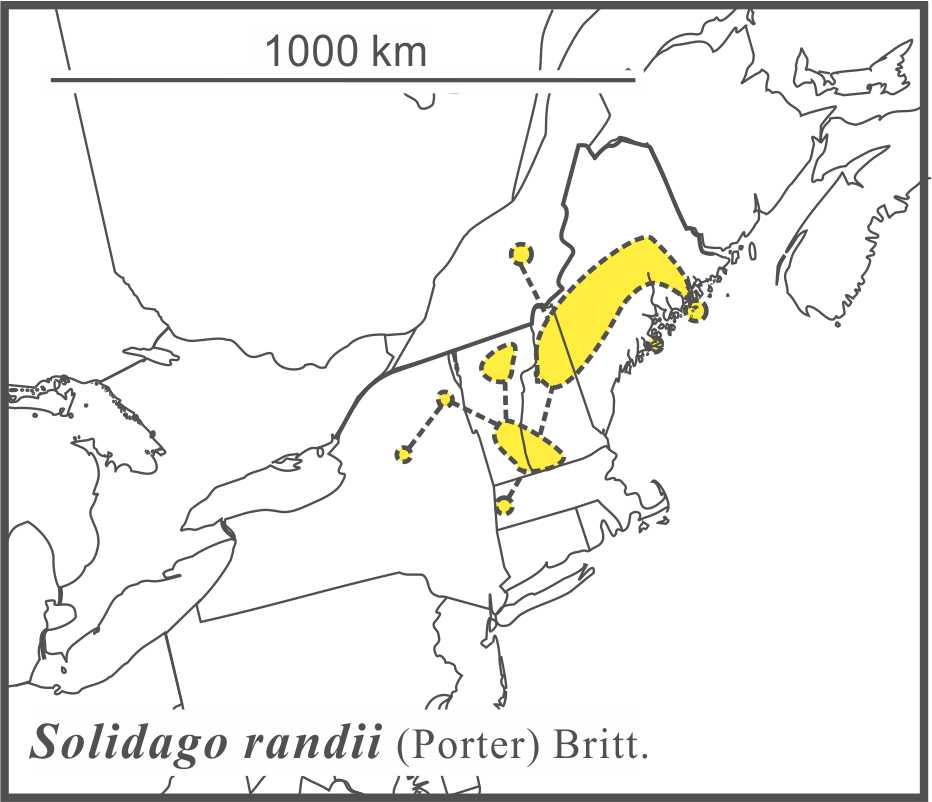Solidago randii (Porter) Britt. occurs on dry serpentine soils and granitic rocky barren uplands of mountains below alpine slopes in rare disjunct populations throughout its range in southern Quebec, New England and New York. The species is mid size in height for subsect. Humiles ranging from (11-)18-66 cm tall (x=31 cm) and involucres that are 4-5.5 mm tall. Robust plants have broad leaves for the height of the stem compared to other northeastern species and the bases tend to taper gradually to the based or down to a broadly winged petiole. Cypselae are very sparsely proximally to sparsely so distally to sparsely proximally to moderately so distally It is tetraploid throughout its range (Peirson et al. 2012). The species was treated as Solidago simplex var. monticola (Porter) Ringius by Semple & Cook (2006 FNA) and included in the eastern ssp. randii(Porter) G.S. Ringius. Semple & Peirson (2013) supported recognition of the taxon at species level.

Semple et al. (2019) presented a multivariate analysis of all 13 species of S. subsect. Humiles. In the analysis of the 6 species native to the mid west and northeartern US and adjacent Canada, 13 of 14 specimens of the S. randii a priori group were assigned a posteriori into S. randii, but with probabilities ranging from 100-37% probability. Smaller specimens tend to be more difficult to identify due to fewer smaller leaves.
Semple, J.C. , and J.A. Peirson. 2013. A revised nomenclature for the Solidago simplex complex (Asteraceae: Astereae). Phytoneuron 2013-41. 1-5.
Semple, J.C., K. Kornobis, A. Mazzorato, G.S. Ringius, and J.A. Peirson. 2019. A multivariate morphometric analysis of Solidagosubsect. Humiles (Asteraceae: Astereae). Phytoneuron 2019-25: 1–61.
Last revised 19 May 2025 by J.C. Semple
© 2025 J.C. Semple, including all photographs unless otherwise indicated
1-4. Solidago randii. 1. Shoots, Ringius 1762 & 1766 WAT, Mt. Desert Is., Maine. 3. Heads, Ringius 1800 WAT. 4. Fruit, disc corolla, Grout s.n. (NY).







